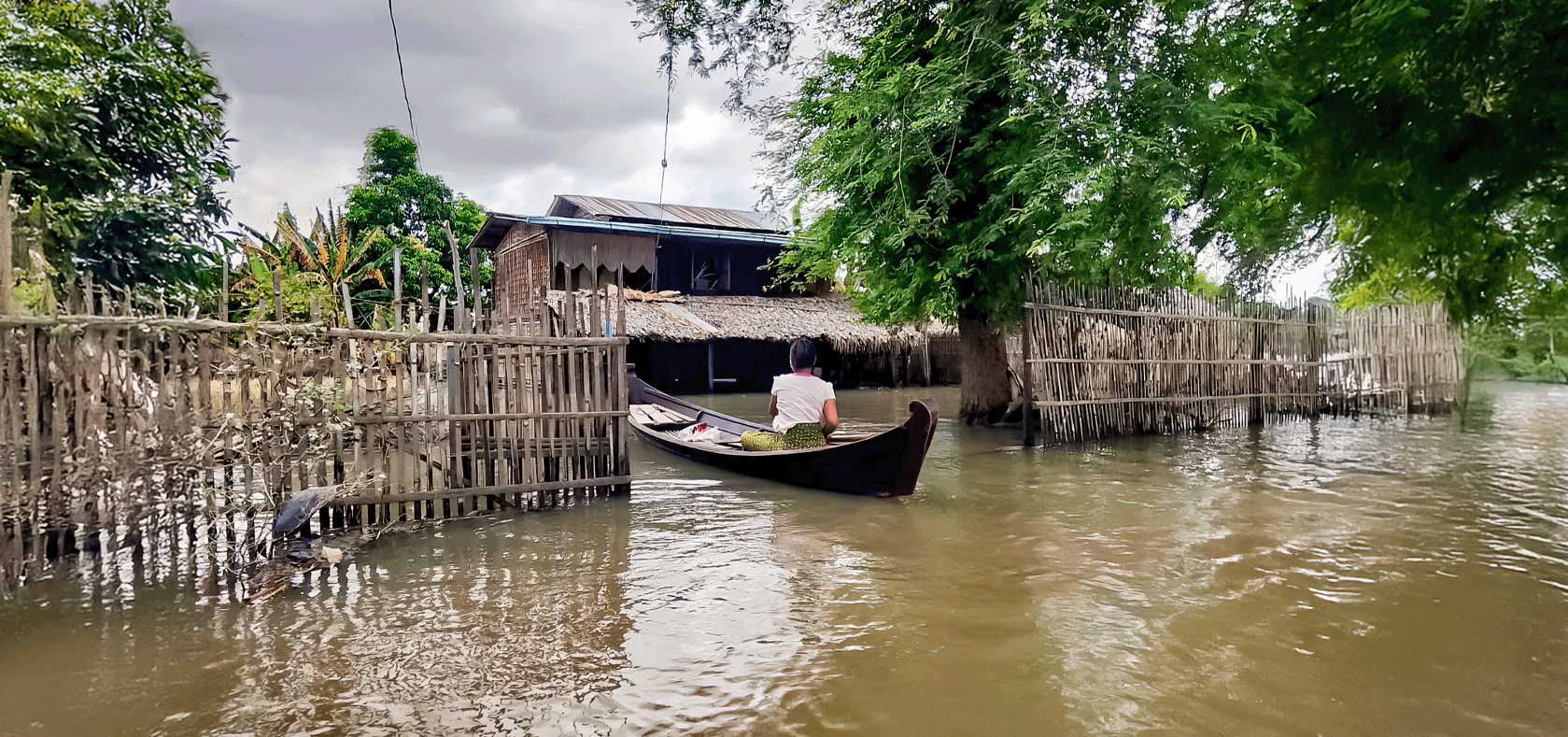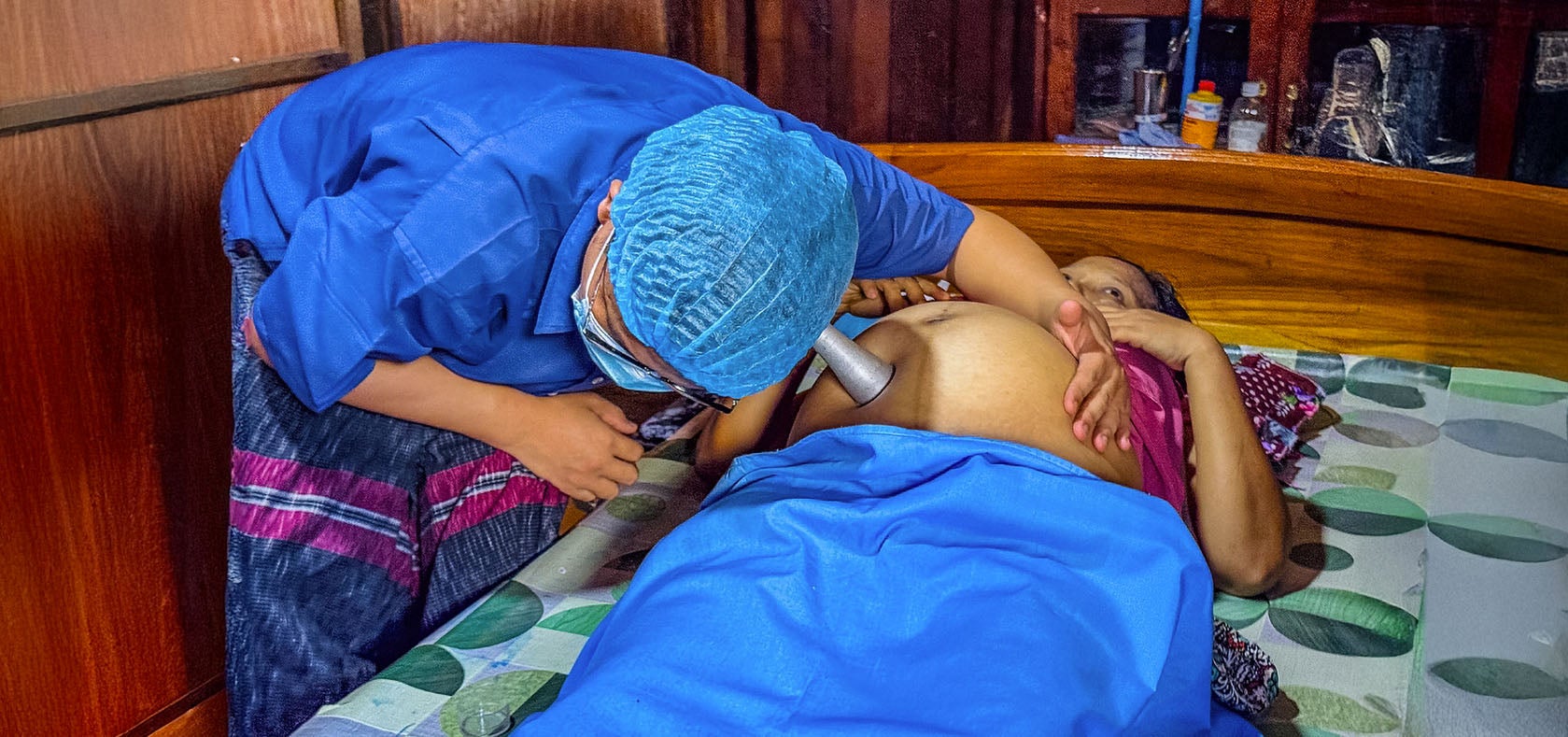Myanmar flood recovery: Supporting the resilience of women and girls
Date:
Author: Alexandra Peard

Almost two months after Myanmar was impacted by severe flooding, more than 1 million people have been affected, including approximately 600,000 women and girls who face unique and heightened challenges, from health risks to protection needs.
The Myanmar Gender in Humanitarian Action Working Group (GiHA WG) has issued its second Gender-Impact Flood Update to provide insight into how the humanitarian community in Myanmar is addressing the specific needs of women and girls impacted by the floods.
Read the full Gender-Impact Flood Update No. 2
Restoring dignity through essential hygiene support
Access to clean water and sanitary facilities has become a critical concern. After food, hygiene items are the second-highest need in flood-affected areas.[1] Dignity kits—containing sanitary products, soap, and other hygiene essentials—are being distributed by UN Women, UNFPA and their partners. These kits promote physical and psychological well-being, empowering women and girls to feel more confident and secure. Distributing the kits provides community volunteers and other humanitarian actors an entry point to engage with women and girls and share information about how to access available services.
Delivering essential maternal and reproductive care
The crisis has severely impacted Myanmar's healthcare infrastructure, with damaged roads and facilities preventing people from accessing health services. Women of reproductive age and pregnant women are among the most vulnerable because they need specialised services that are not easily accessible amid the crisis. In response, mobile clinics operated by UNFPA and local partners are reaching these women, providing maternal health care and family planning services.
These mobile clinics offer more than just physical care—they deliver a sense of relief to women like Moe Moe from Kayin State, who is eight months pregnant and shared, “I finally feel like I can breathe again, knowing I have the support and care I need for me and my baby.” In addition to the mobile clinics, clean delivery kits are being distributed to help pregnant women without access to health facilities deliver safely, even in challenging conditions.

Livelihood support and economic empowerment
For women, who face increased care responsibilities amid the crisis, and additional barriers to mobility and employment opportunities, the economic impacts of the floods are severe. The floods have destroyed farmland, livestock and agricultural equipment – decimating sources of income for women in agriculture and small-scale businesses. The floods have also scattered existing landmines, including shifting them into farmlands and other locations, putting farmers at risk. Local women-led organizations are emphasizing the need for targeted livelihood support, "Most women are calling for their urgent need for livelihood assistance to be recognized and addressed directly," said one GiHA member. Support for income generation is critical not only for immediate recovery but also for ensuring women’s long-term resilience.
Safeguarding education
For young girls, the flood’s impact on education poses additional risks. Damaged schools and financial pressures on families make it more likely that girls will drop out of school, increasing the risk of early marriage or child labour. Local organisations also report school-aged girls in flood-affected areas are taking on household and care work, such as looking after younger siblings, cooking and cleaning. This decreases the time they have available to attend school. To help combat this, Essential Learning Packs have been distributed to nearly 10,000 students, including 5,000 girls. Training local teachers, 75 per cent of whom are women, is another critical component of the education response. Capacity-building efforts equip teachers to address the specific needs of girls and boys affected by the floods, helping to provide a stable environment for students during this difficult time.[2]
Protection against gender-based violence
The impact of displacement and crowded shelters has heightened the risk of GBV, with 67 per cent of camps reporting safety concerns for women and girls.[3] In response, humanitarian organizations are working to establish safe spaces for women and girls, and raise awareness of available hotlines/helplines and referral services, enabling survivors of violence to access the help they need. However, limited access to remote areas remains a challenge, underscoring the importance of ongoing advocacy for unrestricted, unimpeded access to affected regions.
Women are critical to the response
Local women volunteers are playing a critical role in the response efforts, from distributing dignity kits to providing information on health services. These women bridge the gap between humanitarian aid providers and affected communities, especially in remote areas where access remains restricted. Their efforts demonstrate the resilience and leadership of women on the front lines, ensuring that their communities are supported and that critical resources reach those in need.
Urgent call for increased funding and access
As the flood response continues, funding remains a significant constraint. With only 28.5 per cent of the 2024 Humanitarian Needs Plan funded, there is an urgent need for additional resources. The Central Emergency Relief Fund (CERF) has allocated USD 4 million, and donors have contributed an additional USD 3 million, but more support is required to sustain the response.
Unrestricted access to all affected areas is essential for delivering aid to the most vulnerable.
[1] Finding from UNOCHA analysis of 230 assessments completed across flood-affected areas, October 2024.
[2] Myanmar Education Cluster, October 2024.
[3] Findings from UNOCHA analysis of assessments completed across flood-affected areas, October 2024.